C Looking at clipping yield from putting greens
Some golf course superintendents take a measure of clipping yield at each mowing.36 I wanted to look at those data for these reasons:
- to see how yield is affected by temperature
- to see how yield is affected by growth potential (GP)
- to see if GP assumptions in growth can be detected by combining data from multiple sites
Golf course superintendents shared data with me from 5 locations:
- Canada, cool-season grass
- Japan, warm-season grass
- Japan, cool-season grass
- New Zealand site 1, cool-season grass
- New Zealand site 2, cool-season grass
What I’ve done here is rough, but I find it quite interesting. Please keep these things in mind when looking at the results:
- Measurements were in different units. Liters per green, liters per green reported on a 100/m^2 basis, and number of time the baskets were emptied per mowing event.
- I’ve adjusted these measurements to a scale of 0 to 1, by dividing each measurement by the maximum measurement at that site. That gives fraction of the maximum clipping yield.
- For the sites in Japan that measured the number of liters per day, I smoothed the measurement by taking the average of today’s yield and the yield on the previous 4 days.
- For one location I used on-site temperature data; for other locations I looked up the closest daily weather data I could find.
- I did not make any effort to account for N applications, growth regulator applications, irrigation, or verticutting or topdressing or other maintenance practices that may influence yield.
- I removed some outliers of exceptionally high clipping yield from a couple sites.
- My guess is that with data from enough sites, there would be a general trend in clipping yield in response to temperature or GP, averaged across all the sites, that would cancel out all the noise from the day-to-day variability in maintenance practices that influence yield.
Charts by location
These plots look at the GP and the yield, both on a scale of 0 to 1, across time, on a site by site basis. I wanted to see how the clipping yield was related to the GP. For the warm-season grass in Japan, the clipping yield and the GP track pretty closely, more so than the clipping yield and the temperature.
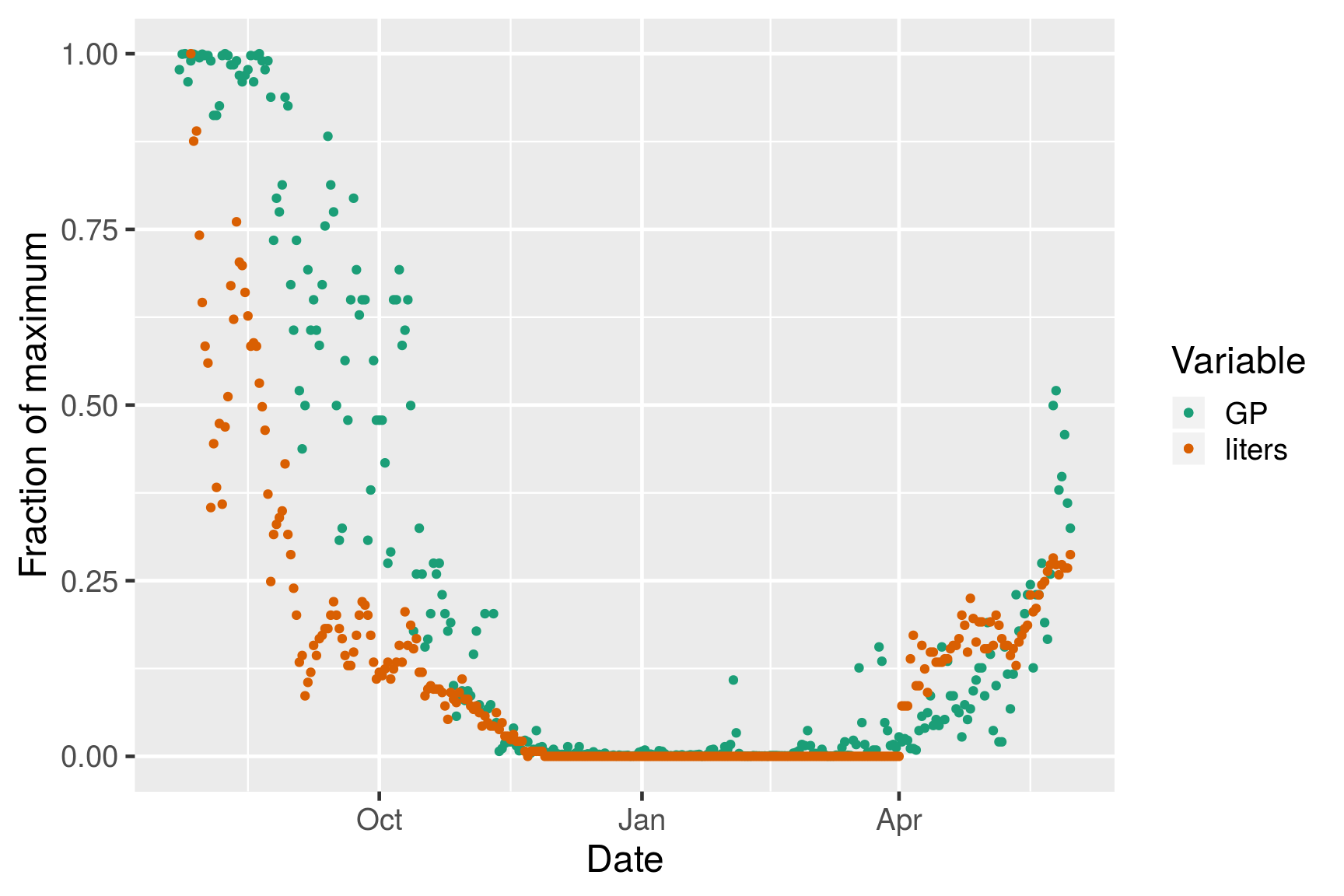

For cool-season grass in Japan, the GP and the yield have a similar trend, but the yield tracks with temperature even more cleanly.
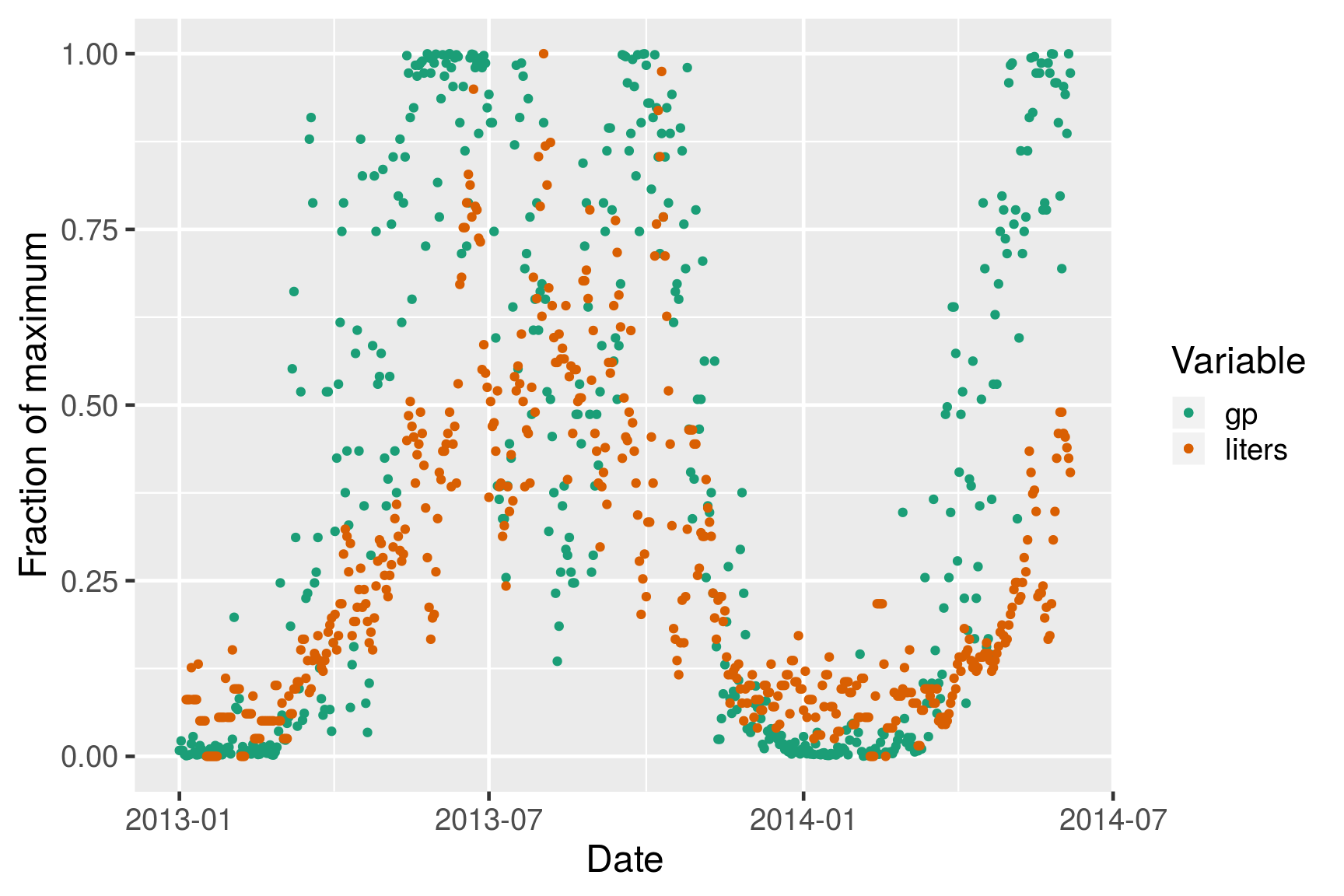
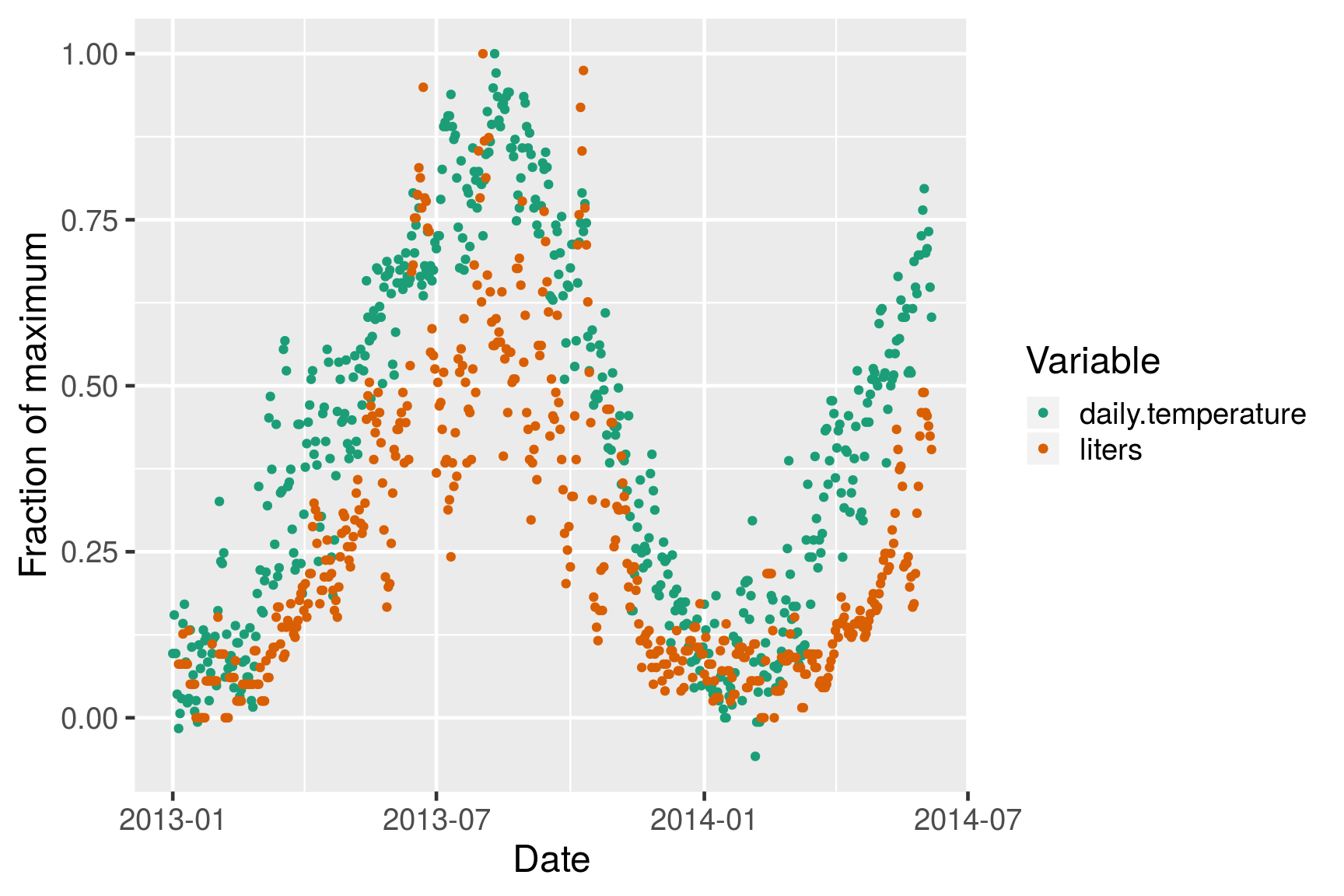
These charts show the yield over time and the GP and the temperature at the Canada site; note that the data now are number of basket empties per day.
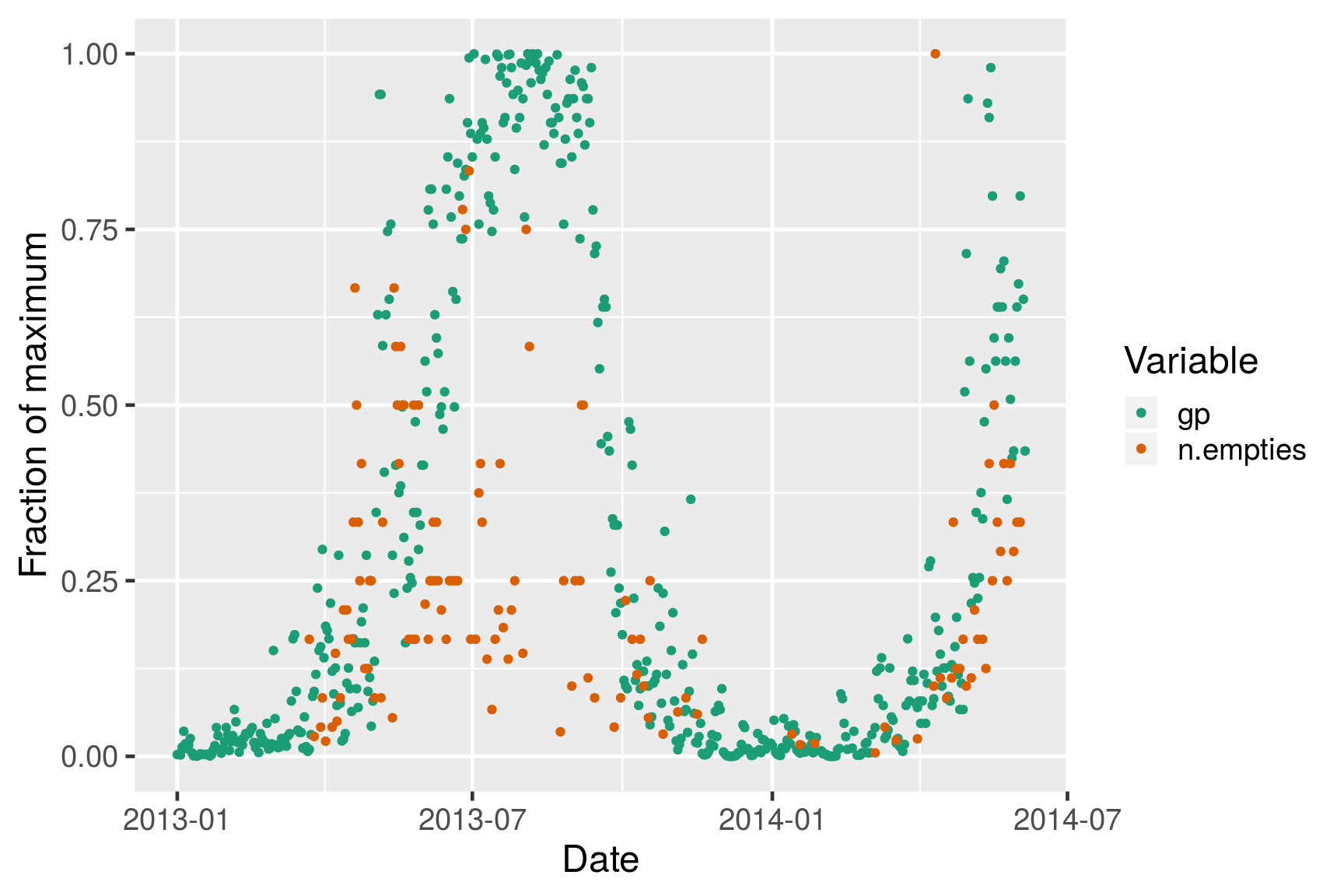
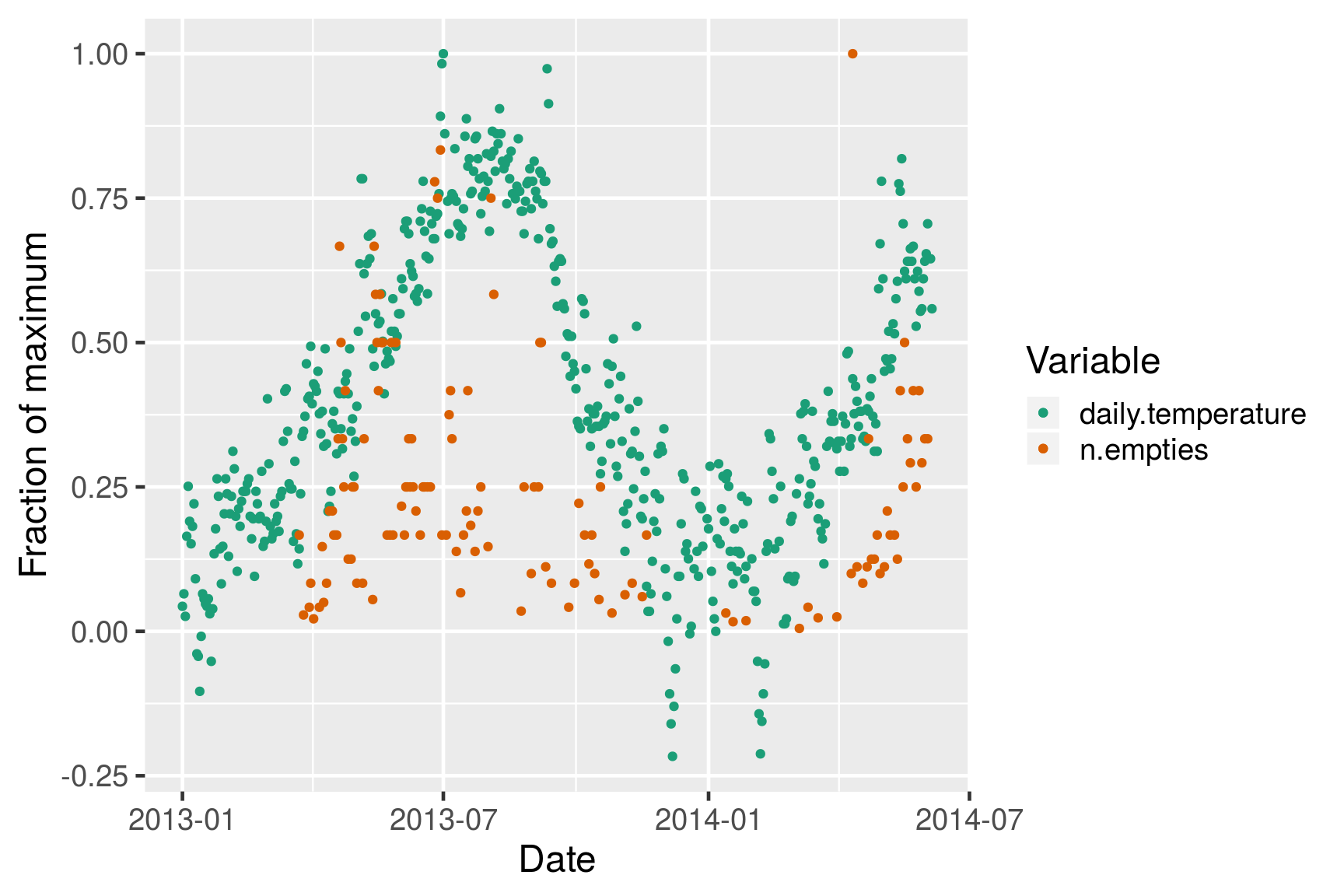
For New Zealand, the data are similar between sites. These charts show the yield, again in empties per day, plotted with GP and with temperature.
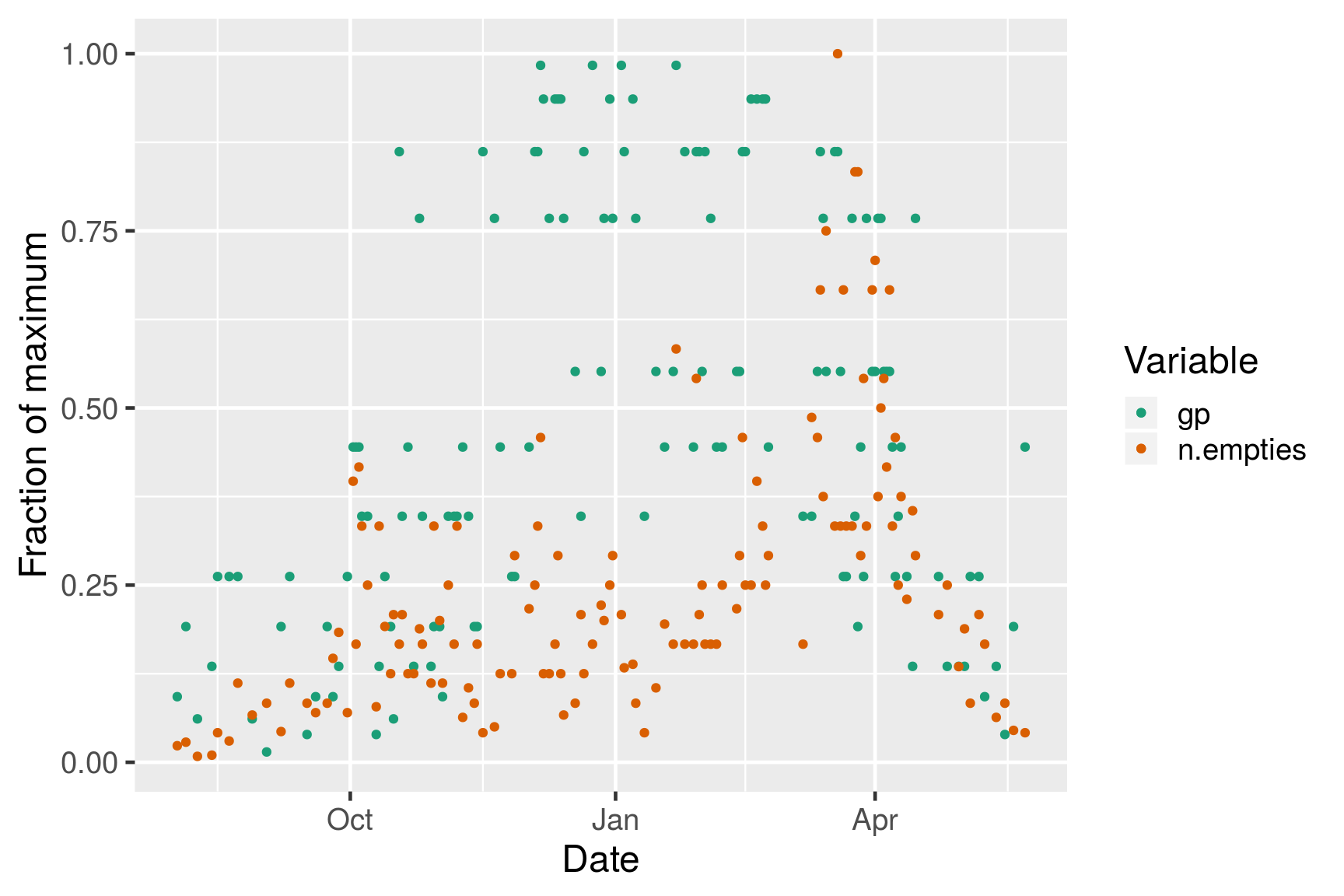
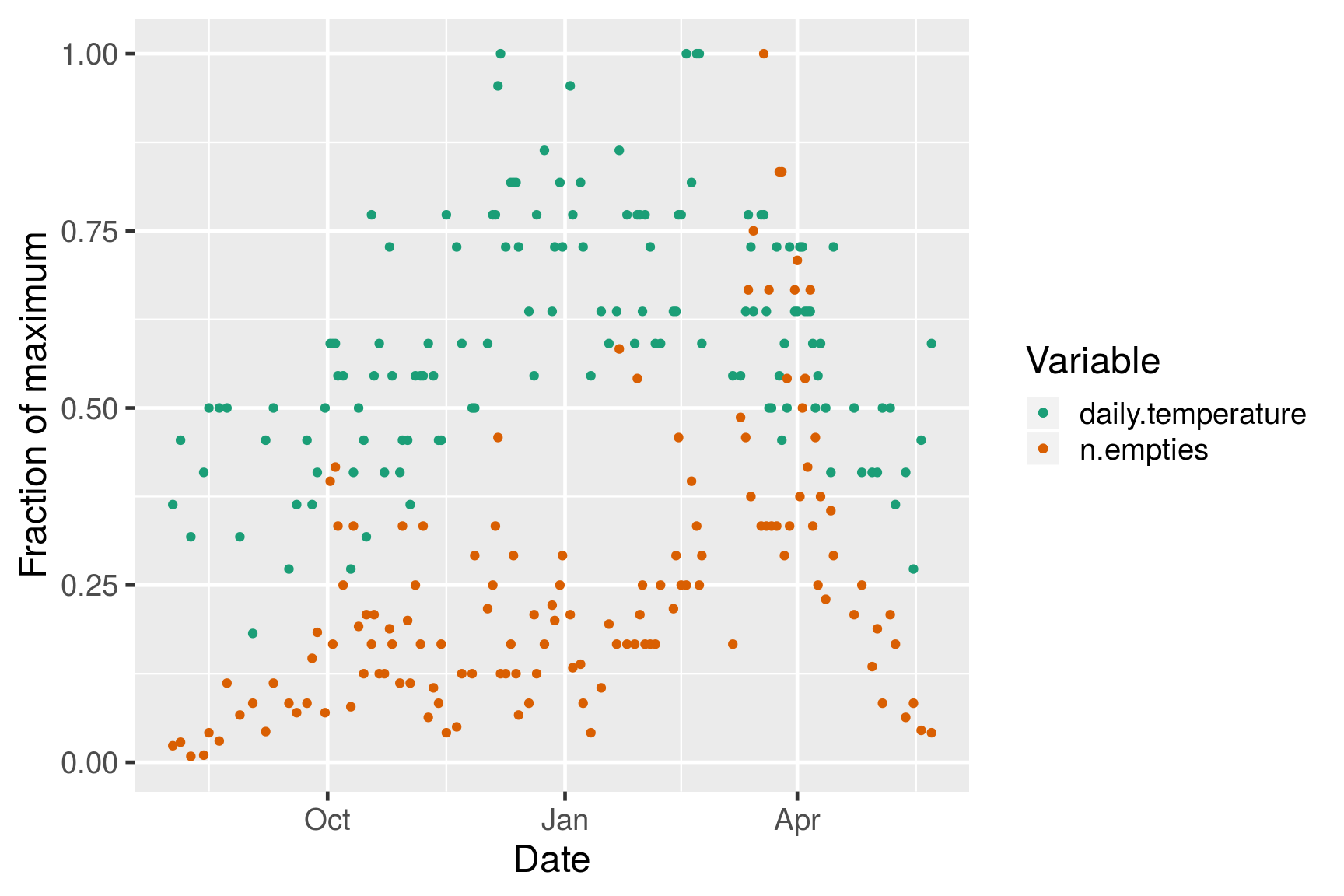
I think it is interesting to look at the relationship between GP and yield for all sites together. This is a bit messy.
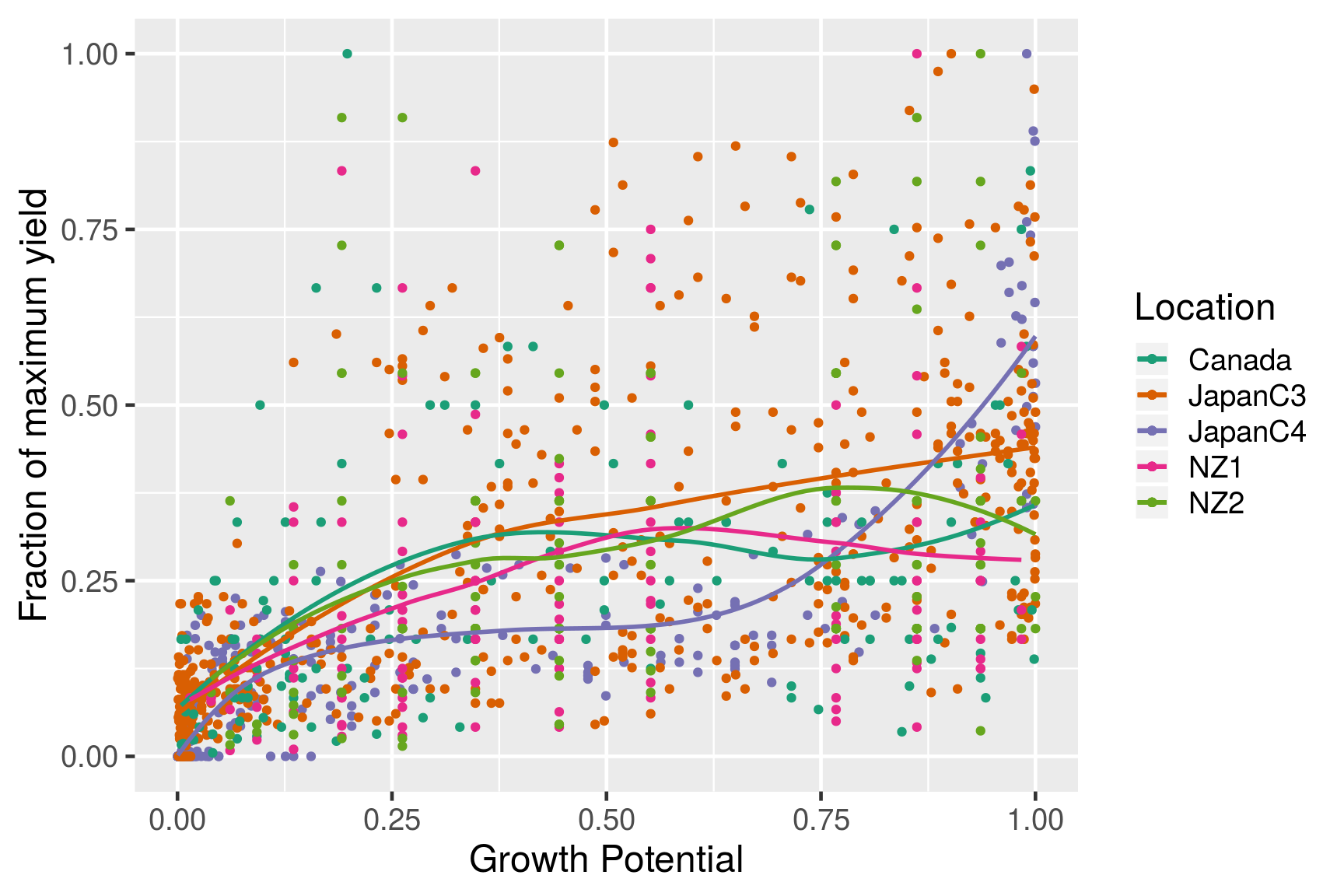
Looking at the fraction of maximum yield for all locations actually makes more sense when plotted by temperature.
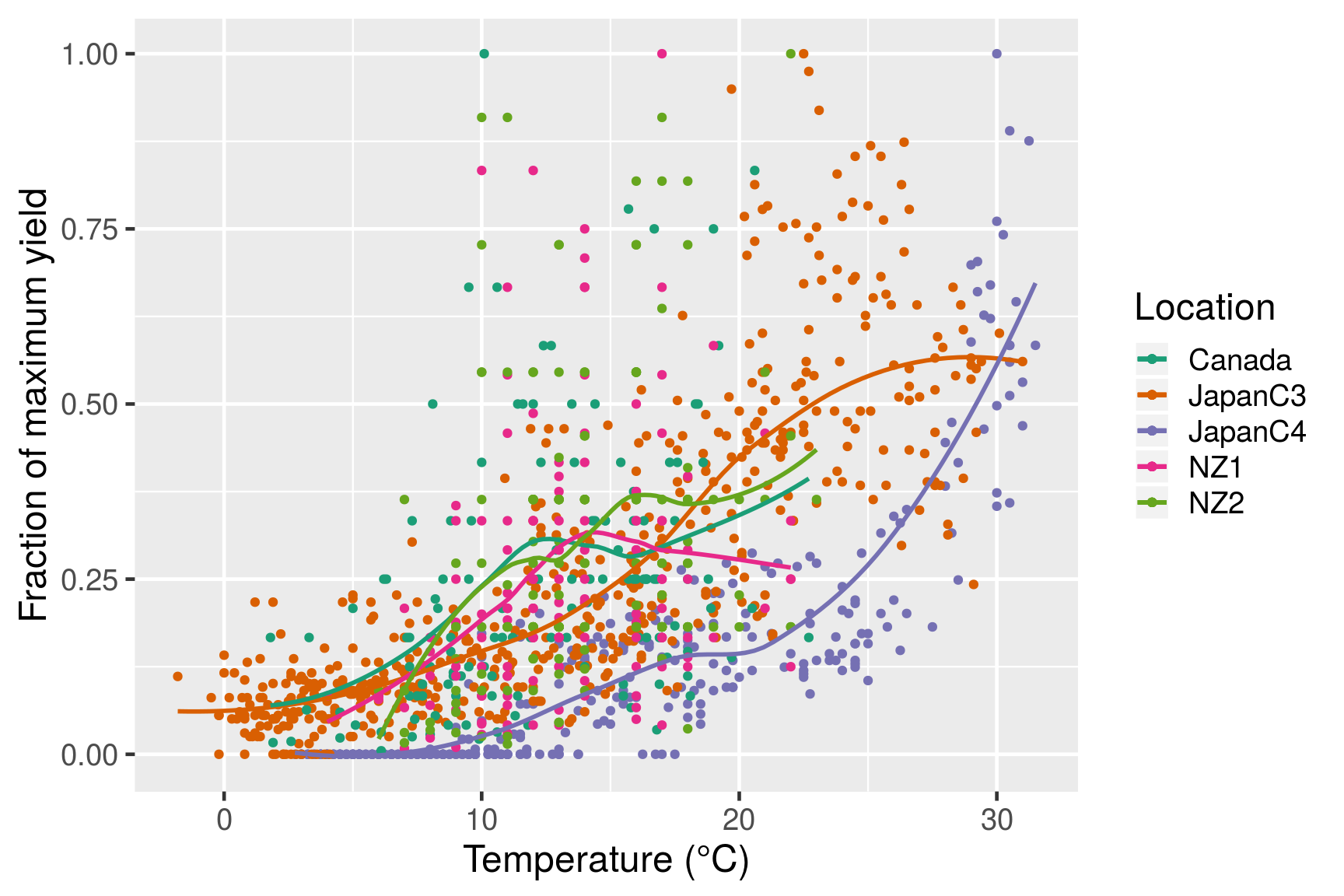
My thoughts at this point:
Measuring in liters (volume of clippings) is a bit more precise than empties per day. If this were to be a larger project from multiple locations, it would be nice to have those cleaner data.
The yield of bentgrass in Japan doesn’t drop much even when temperatures are well above the optimum. For the cool-season grasses at Canada and New Zealand, the temperatures didn’t get much above the optimum (20°C). Maximum yield was seen even at less than 15°C.
The data that match GP best are for warm-season grass at Japan. I think this is because the optimum temperature is always higher than the actual temperature. For cool-season grass, the optimum growth can occur across such a wide range of temperatures, and this makes the data messier for cool-season.
Even if these charts look messy, and there is not a clear relationship between GP and yield, I like GP. It gives a number in the range of 0 to 1, which is useful in a number of ways, it is potential, not reality, and it gives a warning when temperatures move away from the optimum in a way that linear representations of temperature does not.
This was a report I put together in June 2014. You can find it at (http://www.seminar.asianturfgrass.com/20140612_clipping_yield.html).↩